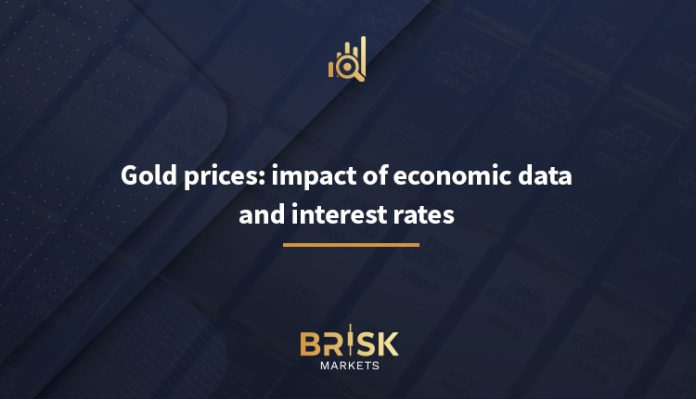Gold and silver prices regained momentum thanks to weak data from the US, raising hopes of a cut in federal interest rates during 2024. Although concerns about inflation remain, a potential economic slowdown may prompt the Fed to take policy easing measures faster.
The long-term outlook for gold remains positive, indicating the possibility of achieving further gains despite the quiet data next week, as gold and silver prices began to rise at the beginning of the new week, and metals also recovered from their lowest levels after the release of key US data on Friday, including… That’s the April Nonfarm Payrolls report and the ISM Services PMI, which did not meet expectations.
There was more evidence that the battle against inflation is continuing, with the Purchasing Managers’ Index for purchasing prices recording a significant jump according to the Institute for Supply Management (ISM). In light of these developments, investors have become somewhat optimistic about the chances of interest rates being cut at least twice before the end of 2024 by the Federal Reserve. However, it would take the market to get more evidence of an economic slowdown to see a sharp repricing of US interest rates again.
Although next week may not see a lot of important data, this could be beneficial for gold. Regardless of the short-term fluctuations that may occur in gold prices this week, it is clear that the long-term outlook for gold remains strong.
To answer the question why the price of gold has risen this year, gold has been receiving support from years of persistent inflation that has reduced the value of fiat currencies, although it has weakened recently amid profit-taking and resistance to early interest rate cuts by the Federal Reserve.
Resilience of precious metals under inflationary pressure
Defenders of precious metals stress their recent resilience despite a strengthening dollar and rising bond yields. They believe that after the excessive rise in prices stops, gold can resume its upward trend, and point to the ongoing gold acquisitions by central banks and the role of precious metals as tools to protect against inflation as evidence of this.
As mentioned previously, paper currencies are witnessing a significant decline in value, and this trend is expected to continue given the ongoing inflation in many countries. Therefore, demand for precious metals is expected to remain strong as a reliable inflation hedge, and this works against sharp selling.
It is possible that the Fed will cut interest rates in 2024 after all. Recent strong inflation numbers have dampened expectations for a rate cut in 2024. Despite this steady positive data leading up to Friday’s jobs report, the weak poll-based numbers were not reassuring. Concerns about economic fragility were heightened by the Services Purchasing Managers’ Index (ISM) data published on Friday, which fell to 49.4 versus expectations of 52.0.
This unexpected decline followed a similar trend seen earlier in the week, where the ISM Manufacturing PMI fell below the expected level and the Chicago PMI deteriorated. However, inflation remains a problem, and attention is being brought back into focus by the sharp increase in prices paid, which reached 59.2 compared to 53.4 in the previous month. A similar pattern emerged in the manufacturing PMI input prices, which rose at the fastest rate. Since 2022, increasing fears of inflation. Earlier last week, we also saw a larger than expected increase in the Employment Cost Index.
Analysis of the slowdown in economic activity in the United States and its impact on gold markets
Recent data points to a contraction in US manufacturing activity, with the ISM Manufacturing PMI indicating a return to contraction territory after just one month of expansion. In addition, the ISM Services PMI also fell into contraction territory, and the latest employment report showed a decline in the labor market.
Accordingly, the combination of high inflation and weak key economic indicators indicates the possibility of a more pronounced economic slowdown in the future, which may call for an accelerated pace of policy easing.
At the same time, this scenario conflicts with the strengthening of the US dollar against currencies that are witnessing an economic recovery, such as the euro. Gold is expected to remain supported as an effective hedge against inflation, and will benefit from any negative move in US interest rates.
Technical analysis of the gold market and future business opportunities
Although there are possibilities for corrections in gold prices, we see that the risks are heading towards a potential upside. Over recent weeks, gold prices have held themselves within a falling wedge pattern, but after breaking previous record highs, momentum indicators such as the Relative Strength Index (RSI) have begun to reset their “buy points” over time and price.
Bulls are now waiting for a breakout of the wedge pattern resistance to indicate the continuation of the uptrend, and this is expected to happen at levels between $2,320 and $2,330, and this may happen at the beginning of this week. However, we should be wary of an initial rally towards $2,360 before reaching the next upside target at $2,400, which was set at a record high last April at $2,431. The uptrend can extend to higher levels once the right conditions are met.




